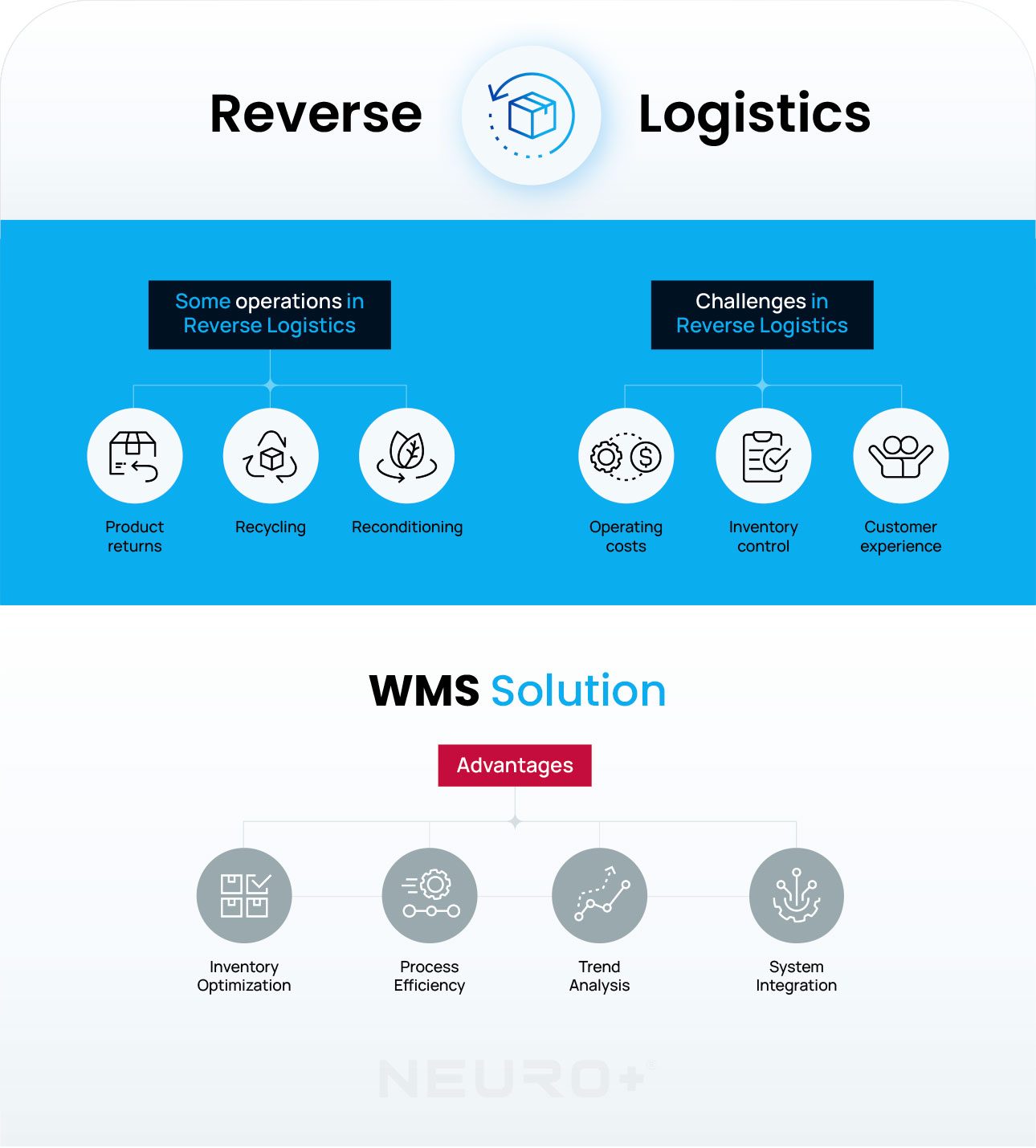
Reverse Logistics: An Essential Pillar complemented by a WMS
In today's world, where sustainability and customer satisfaction are increasingly important, reverse logistics is presented as a key strategy for companies. This concept, which refers to the process of managing the return of products from the consumer to the manufacturer, not only helps to optimize resources, but also promotes responsible and efficient practices.
For reverse logistics to work effectively, it is necessary to have a Warehouse Management Software (or WMS).
Reverse Logistics Operations
When we talk about reverse logistics, it can include one or more of the following operations:
- Product returns: Includes items returned due to defects or customer dissatisfaction.
- Recycling: Handling products that have completed their useful life cycle.
- Reconditioning: Process that allows products to be restored for resale. This approach not only maximizes the recovered value of the products, but also contributes to environmental sustainability, an aspect increasingly valued by consumers.
Challenges in Reverse Logistics
Despite its benefits, reverse logistics faces multiple challenges:
- Operating costs: Returns and handling of unsold products can be costly.
- Inventory control: It is crucial to keep an efficient record of returned products to ensure their correct management.
- Customer experience: Poor management in this process can lead to a decrease in consumer satisfaction.

The solution
When implementing a Warehouse Management Software to face these logistical challenges, a WMS becomes an indispensable tool.
This type of software offers numerous advantages:
- Inventory Optimization: It allows detailed tracking of products entering and leaving the warehouse, facilitating returns, management and reconditioning.
- Process Efficiency: It automates tasks and reduces human errors, which improves the speed of returns management and consequently, customer satisfaction.
- Trend Analysis: Provides valuable data on return trends, allowing companies to make strategic adjustments based on accurate information.
- System Integration: The best Warehouse Management Softwares can be integrated with other platforms, such as ERP and CRM systems, allowing for a broader view of the supply chain.
Reverse logistics has become a fundamental element for companies that want to be competitive and responsible. Implementing a Warehouse Management Software not only facilitates this process, but also allows organizations to adapt to changing market needs. In an environment where efficiency and sustainability are key, investing in the right tools is essential for business success.


